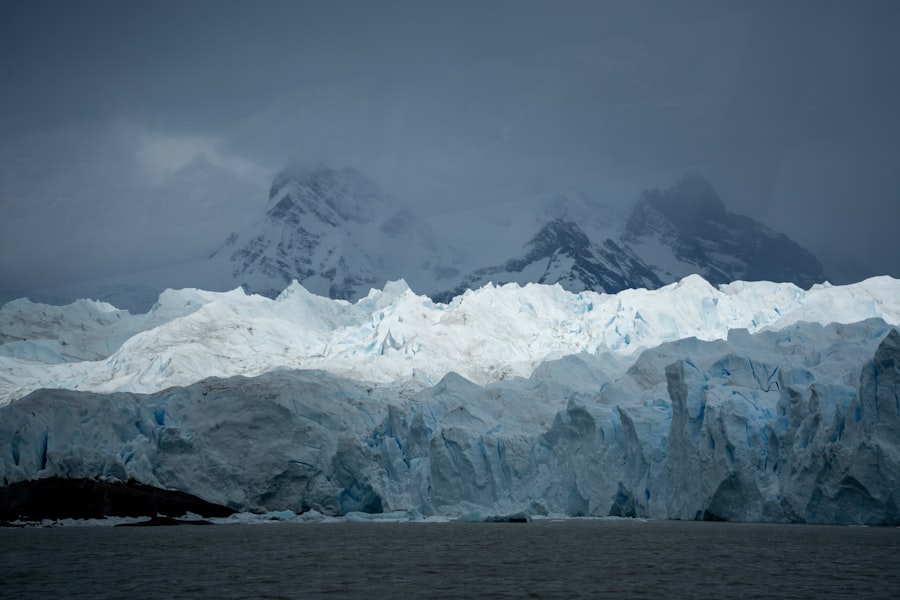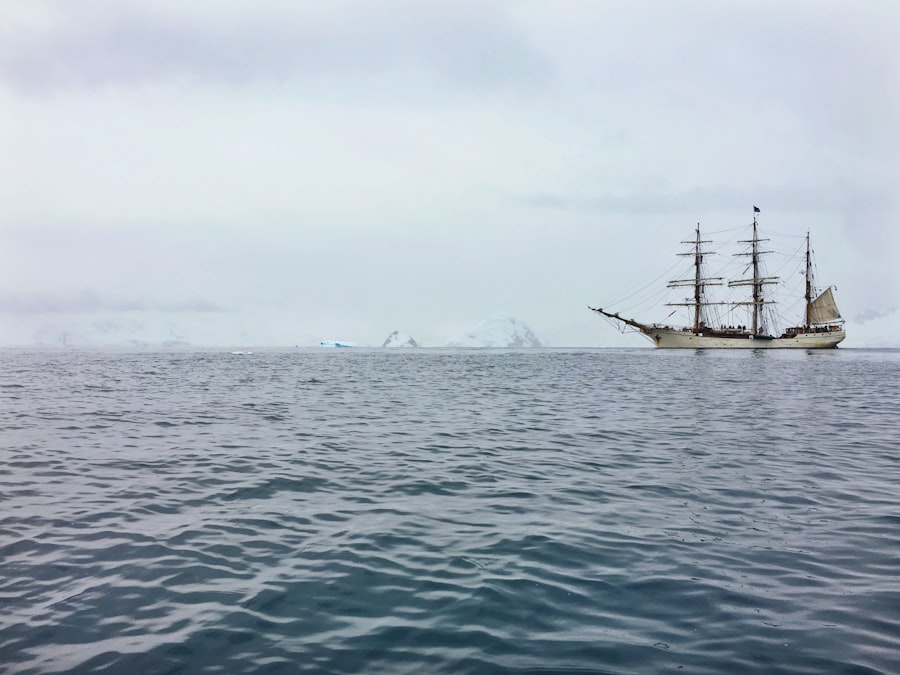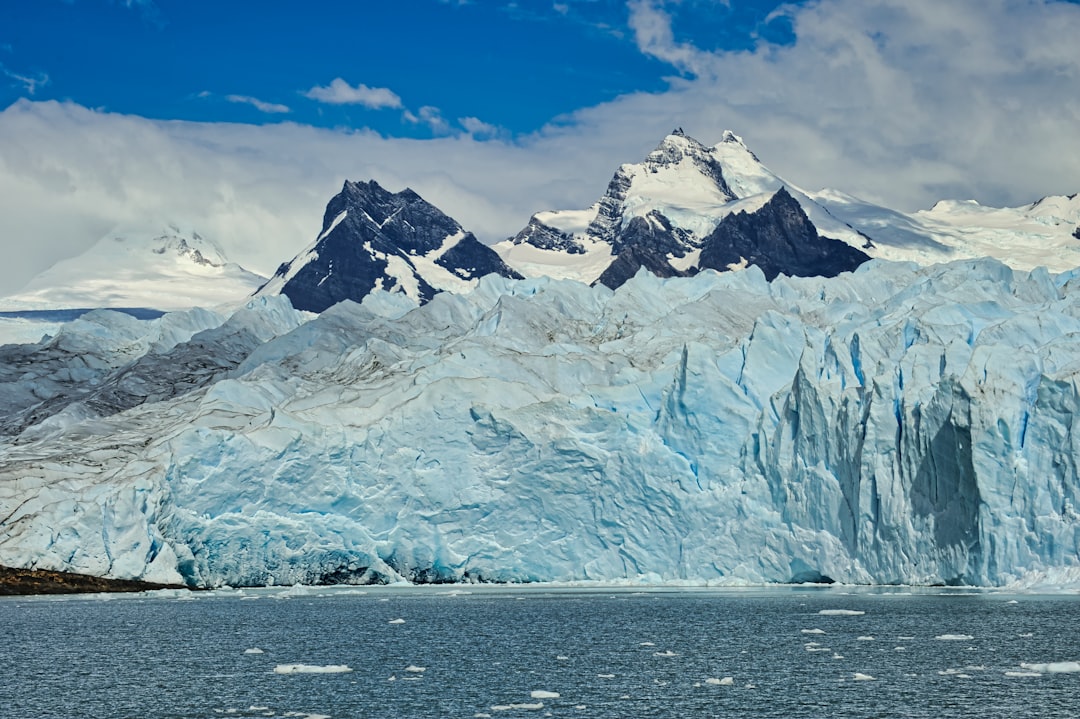The Drake Passage, a body of water situated between the southern tip of South America and Antarctica, is renowned for its tumultuous seas and significant role in global oceanic circulation. Spanning approximately 800 kilometers (500 miles) in width, this passage connects the Atlantic and Pacific Oceans, making it a crucial maritime route for vessels venturing to the icy continent of Antarctica. Named after the English explorer Sir Francis Drake, who navigated these waters in the late 16th century, the Drake Passage has become synonymous with both adventure and peril.
Its unpredictable weather patterns and strong currents have earned it a reputation as one of the most challenging maritime passages in the world. The passage is not only a geographical marvel but also a vital ecological zone. It serves as a conduit for the Antarctic Circumpolar Current, which plays a pivotal role in regulating the Earth’s climate by redistributing heat and nutrients across the oceans.
The unique conditions of the Drake Passage foster a rich marine ecosystem, supporting a diverse array of wildlife, including whales, seals, and seabirds. As explorers and scientists continue to navigate these waters, the Drake Passage remains a focal point for understanding the complexities of our planet’s climate and marine biodiversity.
Key Takeaways
- The Drake Passage is a narrow body of water between South America’s Cape Horn and the South Shetland Islands of Antarctica.
- The passage is crucial for Antarctic exploration as it provides the only navigable route between the Pacific and Atlantic Oceans.
- Argentina serves as a key gateway for expeditions to Antarctica, providing logistical support and infrastructure for scientific research and adventure tourism.
- The history of exploration in the Drake Passage is rich, with famous expeditions and discoveries dating back to the 16th century.
- The passage is home to diverse wildlife and natural wonders, including penguins, whales, and icebergs, making it a popular destination for adventure tourism and scientific research.
The Importance of the Drake Passage for Antarctic Exploration
The Drake Passage holds immense significance for Antarctic exploration, acting as the primary route for researchers, adventurers, and tourists seeking to reach the southernmost continent. Its strategic location makes it an essential gateway for scientific expeditions aimed at studying climate change, glaciology, and marine biology. The passage’s turbulent waters serve as a natural barrier that has historically limited access to Antarctica, yet it also provides a unique opportunity for researchers to observe the effects of environmental changes on polar ecosystems.
Moreover, the Drake Passage is integral to understanding the dynamics of ocean currents and their impact on global weather patterns. As scientists study the interactions between the Atlantic and Pacific Oceans within this passage, they gain insights into how these forces influence climate variability worldwide. The data collected from expeditions traversing the Drake Passage contribute significantly to climate models and help predict future changes in weather patterns, making it an invaluable resource for researchers dedicated to understanding our planet’s climate system.
Argentina’s Role as a Gateway to Antarctica

Argentina plays a pivotal role as a gateway to Antarctica, with its southernmost city, Ushuaia, often referred to as the “End of the World.” This bustling port city serves as a launching point for numerous Antarctic expeditions, providing essential services and infrastructure for researchers and tourists alike. Ushuaia’s strategic location on the Beagle Channel allows vessels to embark on journeys across the Drake Passage, making it an ideal hub for those seeking to explore the frozen landscapes of Antarctica. The Argentine government has invested significantly in developing facilities that support Antarctic research and tourism.
The establishment of research stations on the continent underscores Argentina’s commitment to scientific exploration in this remote region. Additionally, Ushuaia’s vibrant tourism industry has flourished due to its proximity to Antarctica, attracting adventure seekers eager to experience the breathtaking beauty of the polar environment. As a result, Argentina has solidified its position as a key player in Antarctic affairs, balancing scientific research with sustainable tourism practices.
The History of Exploration in the Drake Passage
| Exploration Date | Explorer | Significance |
|---|---|---|
| 1616 | Willem Schouten and Jacob Le Maire | First recorded successful navigation of the Drake Passage |
| 1820 | William Smith | First sighting of the South Shetland Islands |
| 1832 | James Weddell | Set a record for the southernmost penetration at 74°15’S |
| 1914 | Ernest Shackleton | First crossing of the Drake Passage in a small boat |
| 2019 | International team of scientists | Research on climate change and marine life in the Drake Passage |
The history of exploration in the Drake Passage is rich and varied, marked by tales of bravery and discovery. Early European explorers, including Sir Francis Drake himself, navigated these treacherous waters in search of new trade routes and territories during the Age of Exploration. Their journeys were fraught with danger, as they faced fierce storms and unpredictable currents that tested their seamanship and resolve.
The passage became a symbol of both adventure and peril, capturing the imaginations of those who sought to uncover the mysteries of the southern seas. In the centuries that followed, numerous expeditions ventured into the Drake Passage, each contributing to humanity’s understanding of this remote region. Notable figures such as James Cook and Ernest Shackleton made significant contributions to polar exploration, charting new territories and documenting their findings.
These early explorers laid the groundwork for future scientific research in Antarctica, paving the way for modern-day expeditions that continue to unravel the complexities of this frozen frontier.
Wildlife and Natural Wonders of the Drake Passage
The Drake Passage is not only a critical route for exploration but also a sanctuary for an astonishing array of wildlife. The nutrient-rich waters support thriving populations of krill, which serve as a vital food source for various marine species. Whales, including humpback and orca whales, are frequently spotted in these waters as they migrate between feeding grounds.
Seabirds such as albatrosses and petrels soar above the waves, taking advantage of the strong winds that characterize this region. In addition to its diverse marine life, the Drake Passage is home to breathtaking natural wonders. The dramatic landscapes of nearby islands, such as Cape Horn and Deception Island, captivate visitors with their rugged beauty.
Glaciers calve into the sea, creating stunning icebergs that drift through the passage, while volcanic activity adds an element of intrigue to this remote environment. The interplay between land and sea in this region creates a unique ecosystem that continues to inspire awe among those who venture into its depths.
The Challenges of Navigating the Drake Passage

Navigating the Drake Passage presents numerous challenges for mariners due to its notorious weather conditions and strong currents. The convergence of cold Antarctic waters with warmer currents from the north creates unpredictable weather patterns that can change rapidly. Storms can arise with little warning, producing towering waves that pose significant risks to vessels traversing these waters.
As a result, experienced captains must possess a deep understanding of maritime navigation and weather forecasting to ensure safe passage. In addition to weather-related challenges, the Drake Passage is characterized by its strong currents, particularly the Antarctic Circumpolar Current. This powerful current flows continuously around Antarctica, creating turbulent waters that can complicate navigation efforts.
Mariners must be adept at adjusting their routes and strategies to account for these currents while maintaining safety and efficiency during their journeys. Despite these challenges, skilled sailors continue to navigate the Drake Passage, drawn by its allure and significance in polar exploration.
Argentina’s Infrastructure for Antarctic Expeditions
Argentina has developed robust infrastructure to support Antarctic expeditions, reflecting its commitment to scientific research and exploration in this remote region. Ushuaia serves as a central hub for logistics related to Antarctic operations, with modern port facilities capable of accommodating research vessels and tourist ships alike. The city’s proximity to Antarctica allows for efficient transportation of personnel and supplies to various research stations scattered across the continent.
In addition to port facilities, Argentina has established several research stations on Antarctica itself, including Base Marambio and Base Esperanza. These stations serve as bases for scientific research across various disciplines, including glaciology, biology, and meteorology. Equipped with laboratories and living quarters for researchers, these facilities enable scientists to conduct long-term studies in one of Earth’s most extreme environments.
The Scientific Research Conducted in the Drake Passage
Scientific research conducted in the Drake Passage encompasses a wide range of disciplines aimed at understanding both local ecosystems and global climate dynamics. Researchers study oceanographic conditions within the passage to gain insights into how currents influence marine life and nutrient distribution. This research is crucial for understanding how changes in ocean temperatures affect biodiversity in polar regions.
Additionally, studies focused on marine mammals provide valuable data on population dynamics and migration patterns within the passage. By monitoring whale populations and their interactions with other species, scientists can assess the health of marine ecosystems in this region. Furthermore, ongoing research into climate change impacts on glacial melt rates contributes to broader discussions about rising sea levels and their implications for coastal communities worldwide.
The findings from these studies not only enhance scientific knowledge but also inform conservation efforts aimed at protecting fragile ecosystems in Antarctica.
Adventure Tourism in the Drake Passage
Adventure tourism has flourished in recent years within the Drake Passage, attracting thrill-seekers eager to experience one of Earth’s last frontiers. Tour operators offer a range of excursions that allow travelers to embark on unforgettable journeys across this iconic passage. From luxury cruises to rugged expedition vessels, tourists can choose from various options tailored to their preferences and budgets.
Travelers are drawn not only by the allure of reaching Antarctica but also by opportunities for wildlife encounters and breathtaking scenery along the way. Many tours include activities such as kayaking among icebergs or hiking on remote islands, providing immersive experiences that connect visitors with nature. As adventure tourism continues to grow in popularity within this region, it is essential for operators to prioritize sustainable practices that minimize environmental impacts while promoting awareness about conservation efforts in Antarctica.
Conservation Efforts in the Drake Passage and Antarctica
Conservation efforts in the Drake Passage and Antarctica are critical for preserving fragile ecosystems threatened by climate change and human activity. Various international agreements govern activities in this region, including the Antarctic Treaty System, which aims to protect Antarctica’s unique environment while promoting scientific cooperation among nations. This treaty has established guidelines for responsible conduct in Antarctic exploration and research.
Organizations dedicated to conservation work tirelessly to raise awareness about environmental issues affecting polar regions. Initiatives focused on reducing plastic pollution and protecting marine habitats are essential components of ongoing conservation efforts. Additionally, research conducted in the Drake Passage contributes valuable data that informs policy decisions aimed at safeguarding biodiversity in this ecologically sensitive area.
As awareness grows about the importance of preserving Antarctica’s pristine environment, collaborative efforts among governments, scientists, and conservationists will play a vital role in ensuring its protection for future generations.
The Future of Exploration in the Drake Passage
The future of exploration in the Drake Passage holds great promise as advancements in technology continue to enhance our understanding of this remote region. With improved navigation systems and research methodologies, scientists are better equipped than ever to study complex oceanic processes and their implications for global climate change. As interest in polar exploration grows among researchers and adventurers alike, there is an opportunity for increased collaboration across disciplines that can lead to groundbreaking discoveries.
However, with this increased interest comes a responsibility to prioritize sustainability and conservation efforts within this fragile ecosystem. Balancing exploration with environmental stewardship will be crucial as more vessels traverse these waters in pursuit of knowledge or adventure. By fostering awareness about conservation challenges facing Antarctica while promoting responsible tourism practices, stakeholders can ensure that future generations will continue to explore—and cherish—the wonders of the Drake Passage for years to come.
The Drake Passage, a notorious stretch of water between the southern tip of South America and Antarctica, is a significant route for maritime navigation and a fascinating subject for those interested in geography and oceanography. For those looking to delve deeper into the geographical significance and challenges of navigating this treacherous passage, a related article can be found on MyGeoQuest. This article provides insights into the unique conditions of the Drake Passage and its impact on maritime travel. You can read more about it by visiting this page.
WATCH NOW! Drake Passage: Earth’s Deadliest Waters Revealed
FAQs
What is the Drake Passage?
The Drake Passage is the body of water between the southern tip of South America (Cape Horn) and the South Shetland Islands of Antarctica. It is known for its rough seas and strong winds, making it one of the most challenging maritime routes in the world.
Why is the Drake Passage important for Argentina?
The Drake Passage is important for Argentina because it provides access to the Antarctic Peninsula, which is a key area for scientific research and exploration. Argentina has a strong presence in Antarctica and uses the Drake Passage for logistical support and transportation to and from its research stations.
What are the challenges of navigating the Drake Passage?
The Drake Passage is known for its extreme weather conditions, including strong winds, high waves, and rough seas. These conditions can make navigation difficult and dangerous for ships, especially smaller vessels. The passage is also notorious for its unpredictable weather, which can change rapidly and create hazardous conditions for navigation.
How is the Drake Passage used for tourism in Argentina?
The Drake Passage is a popular route for tourists and expedition cruises heading to Antarctica. Many of these cruises depart from Ushuaia, Argentina, and traverse the Drake Passage on their way to the Antarctic Peninsula. The passage offers a unique and adventurous experience for travelers seeking to explore the remote and pristine wilderness of Antarctica.
What wildlife can be found in the Drake Passage?
The Drake Passage is home to a diverse range of wildlife, including seabirds, whales, seals, and penguins. Many species of birds and marine mammals can be spotted during a crossing of the passage, making it a popular destination for wildlife enthusiasts and nature lovers.
